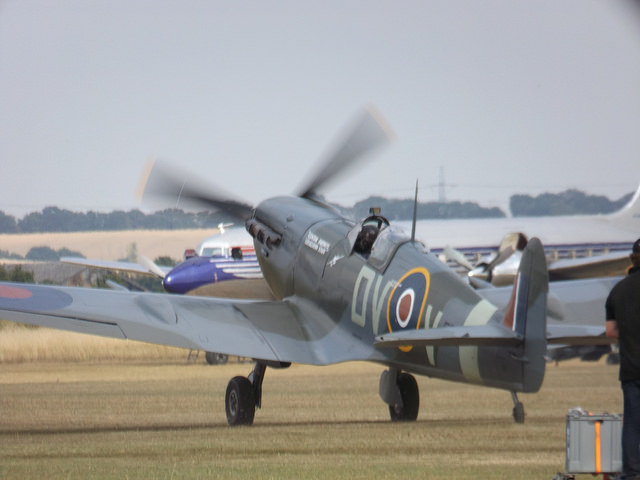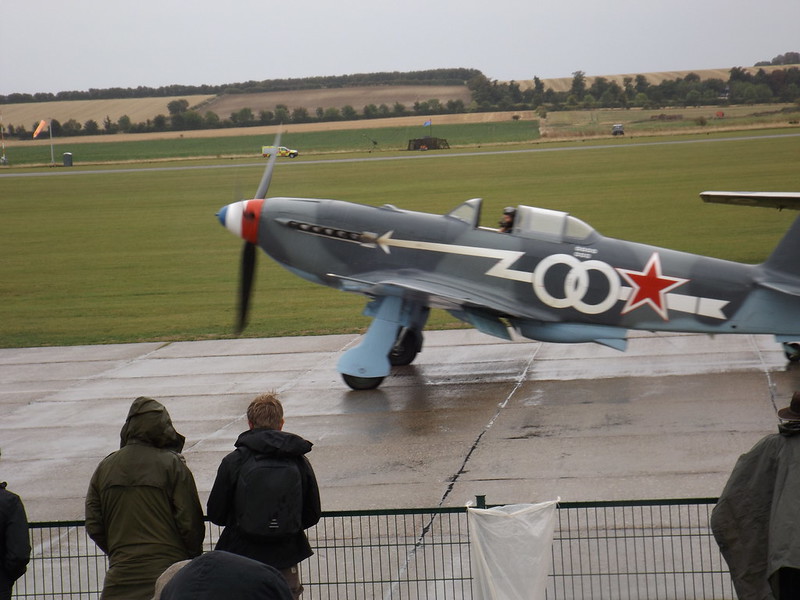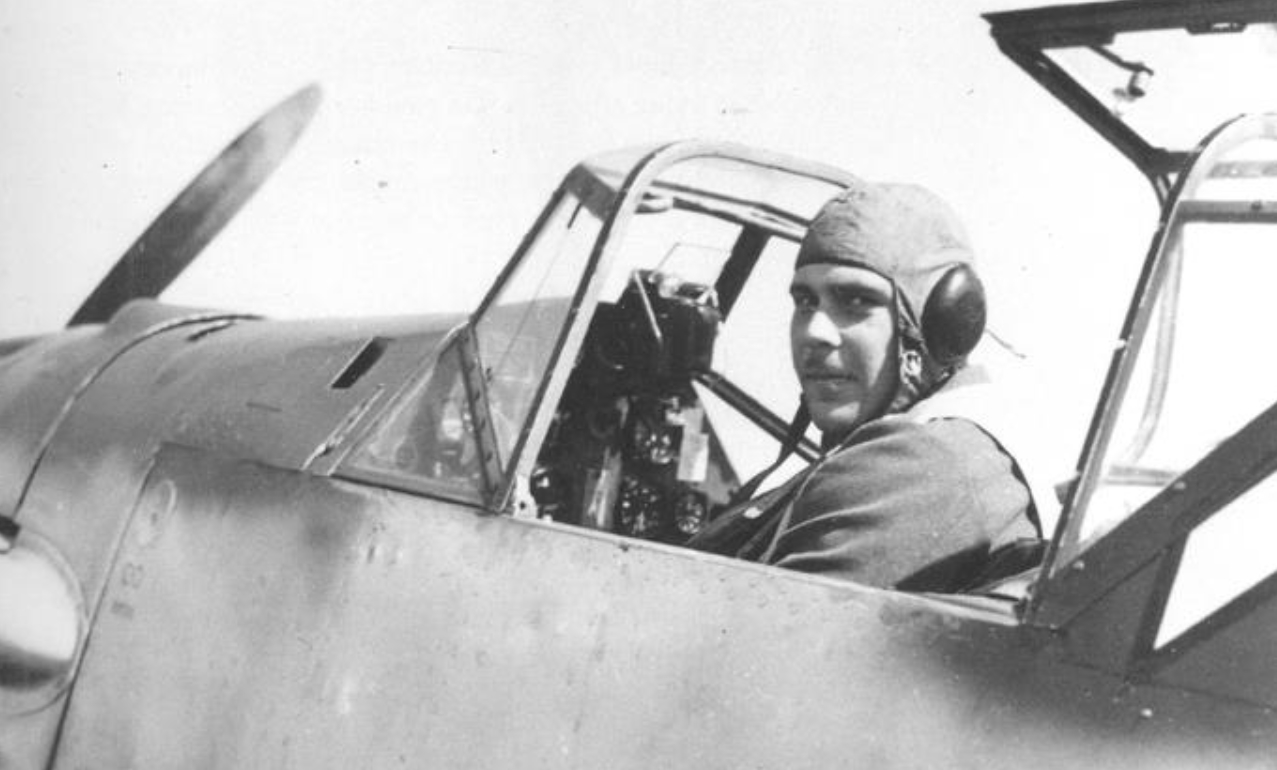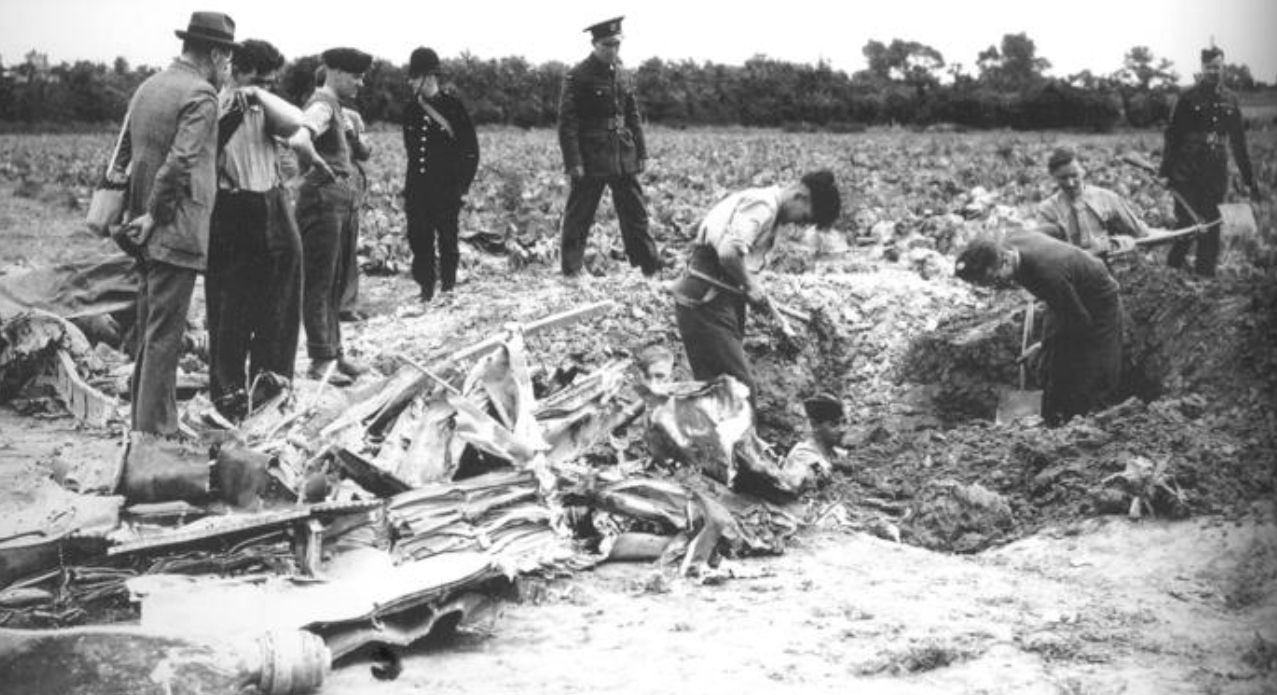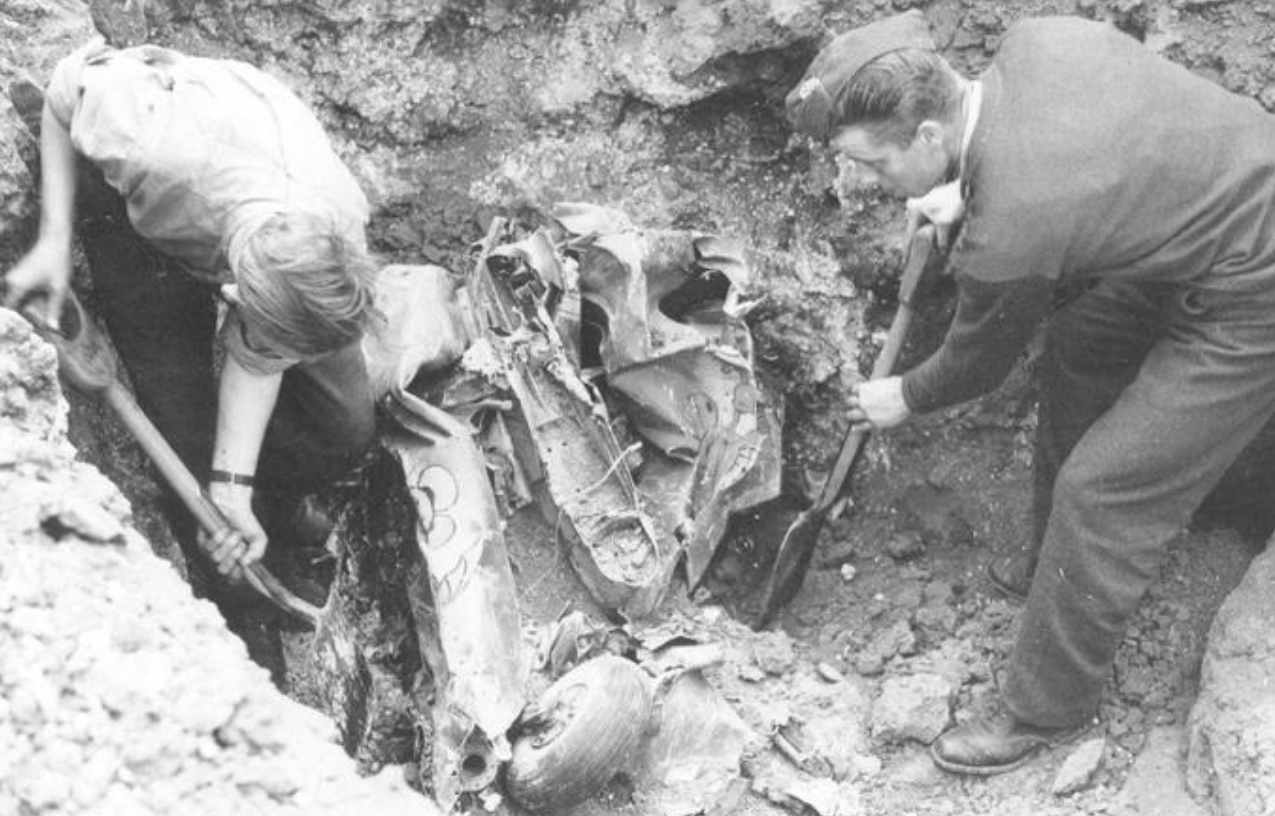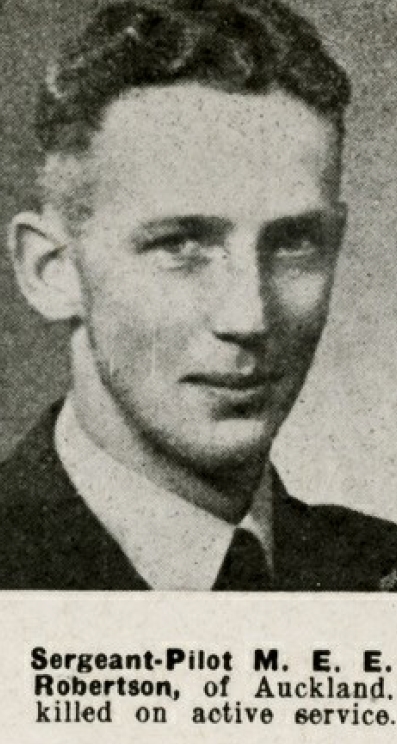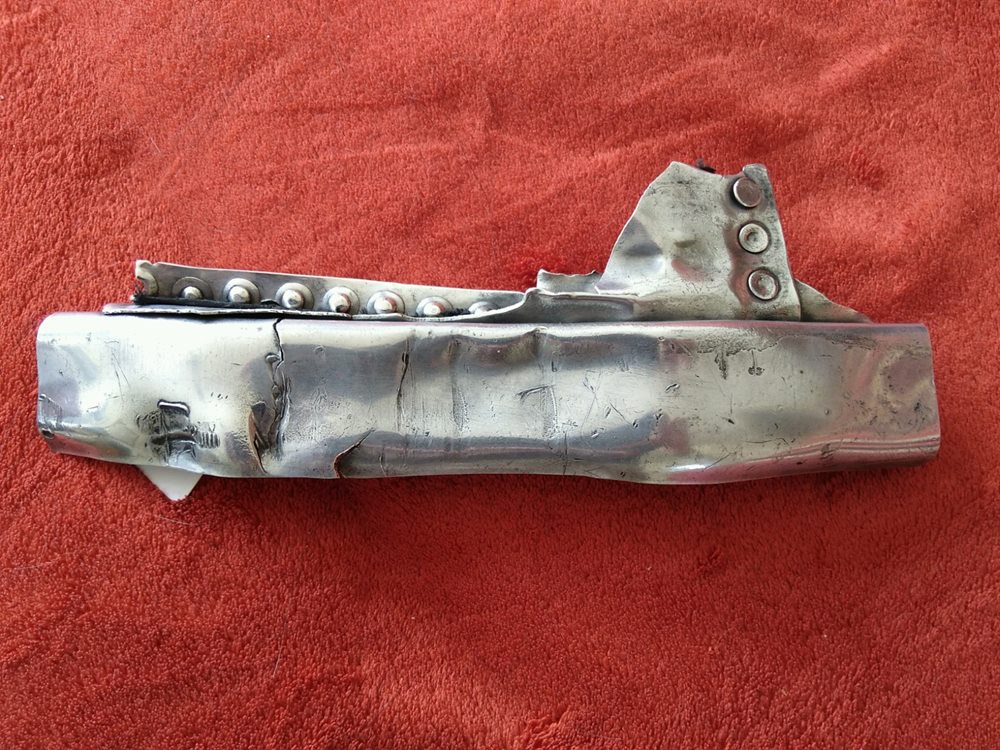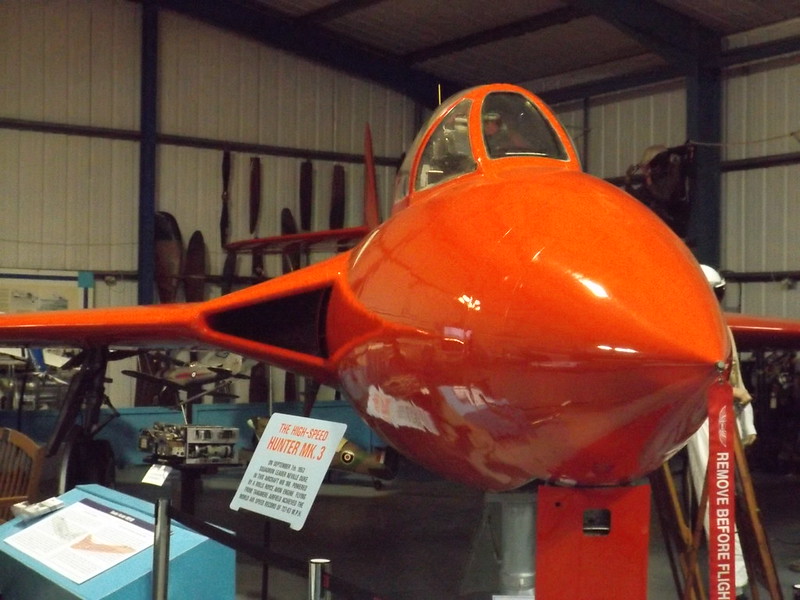
The Second World War resulted in the deaths of around 85 million people. Additionally, tens of millions more people were displaced. However, amid all the carnage people demonstrated remarkable courage, fortitude, compassion, mercy and sacrifice. We would like to honour and celebrate all of those people. In the War Years Blog, we examine the extraordinary experiences of individual service personnel. We also review military history books, events, and museums. And we look at the history of unique World War Two artefacts, medals, and anything else of interest.
Billy Bishop Goes To War
In this blog, we share the official press release for the WWI musical-drama Billy Bishop Goes To War at the Jermyn Street Theatre, London, between 31st October and 24th November 2018. This striking drama is based upon the true story of young Billy Bishop, a failing military college student who became Canada’s indomitable flying ace, the most successful pilot of his generation.
Jermyn Street Theatre, 16b Jermyn Street, London SW1Y 6ST
Wednesday 31 October – Saturday 24 November 2018
Coinciding with the centenary of the end of World War I, Proud Haddock is reviving Billy Bishop Goes To War as part of their War Season and Jermyn Street Theatre’s Rebels Season. This striking drama is based upon the true story of young Billy Bishop, a failing military college student who became Canada’s indomitable flying ace, the most successful pilot of his generation.
Billy Bishop Goes To War will star Charles Aitken (The Knick, Cinemax; Happy Death Day, Universal Pictures; King Lear, Royal Shakespeare Company) as Billy Bishop with Oliver Beamish (Coronation Street, ITV; Blood Brothers, Lyric Theatre; War Horse, The New London Theatre) as the Older Billy Bishop, who will also provide the piano and musical accompaniment. Between them, they will play a further 17 parts as they recount this extraordinary tale.
In 1914, Billy Bishop, aged only 20, signed up to fight in the Great War. A failing and bullied student, he overcame intense prejudice and astonishing danger to receive his wings and become the top fighter pilot. Through a combination of bravery and sheer luck, Billy was able to find his place and prove his worth. He became a true Canadian hero.
Brought to life with songs of the period, Billy Bishop Goes To War vividly transports the audience across the landscape of World War I, from the thick mud of No Man’s Land to the drawing rooms of the British aristocracy. This compelling and darkly comic drama interrogates the nature of heroism and its cost while shining a light on the often-neglected complexities of Britain’s colonial past during the War.
Written by John MacLachlan Gray in collaboration with Eric Peterson, the play returns to London for the first time in over 35 years. Billy Bishop Goes To War is the deceptively moving and totally gripping account of one man’s life in World War I.
Director Jimmy Walters comments, Proud Haddock’s War Season continues with Billy Bishop Goes To War. This is a true story with lots of heart. Billy wasn’t the most academic student, was bullied at school and faced prejudice when he arrived in England during the First World War yet he overcame all of this to become the greatest fighter pilot of his generation. It’s an inspiring story that is a privilege to revive.
For more information download a copy of this press release.
To book ticket visit http://www.jermynstreettheatre.co.uk/. The play runs between Wednesday 31October and Saturday 24 November, 2018.
Spitfire September
In this post, we review a Spitfire September. First, we take a look at the new Spitfire documentary film. Next, the Battle of Britain Air Show at IWM Duxford, and finally, John Nichol’s book, Spitfire: a Very British Love Story. Tally-Ho!
The 15th of September is Battle of Britain day. It commemorates a turning point in the struggle for aerial supremacy in the skies over Britain fought by the RAF and German Luftwaffe during the summer and autumn of 1940. German daylight raids would eventually cease by the end of October, and Operation Sealion, the German codename for the amphibious invasion of southern England, would be cancelled. It was Nazi Germany’s first significant defeat. A victory won by a handful of daring pilots from across the globe and two iconic aircraft: the Hawker Hurricane and Supermarine Spitfire. However, one aircraft would go on to capture the hearts and imagination of the nation. Since 1940, the Spitfire has become an enduring symbol of courage, fortitude, ingenuity and Britishness.
Spitfire – Inspiration of a Nation
My own little September love affair with the Spitfire started with the release of the documentary film Spitfire – Inspiration of a Nation, directed by David Fairhead and Ant Palmer. Narrated by Charles Dance, the film is a biography of both the aircraft and the men and women who flew it. The original music score by composer Chris Roe and mesmerising aerial photography by director John Dibbs work beautifully together. The film was the last onscreen interview given by Battle of Britain fighter pilot and author Geoffrey Wellum, DFC. The film is also the last testament of Mary Ellis, who flew 76 different types of aircraft during the war as part of the Air Transport Auxiliary (ATA). Ferrying aircraft between factories and operational squadrons, the ATA played a vital support role. During her career, Mary delivered over 400 Spitfires safely to their destinations. The film also features a sound recording of aero engineer and chief designer of the Spitfire, R.J. Mitchell, who died of cancer before his creation went into service. Spitfire is a great piece of documentary film-making, and definitely worth the purchase price.
Battle of Britain Air Show
The last event to mark the centenary of the RAF’s first 100 years, the Battle of Britain Air Show was held at the IWM Duxford on the 22nd and 23rd of September, 2018. Unfortunately, the weather on Saturday was extremely challenging with heavy, persistent rain all afternoon. Nevertheless, the event organisers, aircraft owners and pilots did an excellent job. The show told the history of the RAF from its founding at the end of World War One to the modern day. Highlights of the display included two de Havilland Vampire jets, Battle of Britain Memorial Flight (Spitfire, Hurricane and Lancaster), a 617 Squadron flypast (Tornado GR4, new F-35 Lightning II and Avro Lancaster) and the Red Arrows. The show closed with a formation of 18 Spitfires. We also got to see iconic warbirds such as the P-51D Mustang, Boeing B-17 Flying Fortress, Catalina seaplane, Westland Lysander and Soviet Yak 3. Sadly, the MiG-15 was not able to fly due to adverse weather conditions. The Battle of Britain Air Show was a very impressive event, and one I would highly recommend. There’s nothing like seeing 18 Spitfires take to the sky, and listening to the combined roar of all those Merlin and Griffon engines.
Spitfire: a Very British Love Story
Finally, I finished my Spitfire September by reading John Nichol’s book Spitfire: a Very British Love Story. A former RAF pilot, John Nichol knows a thing or two about aerial combat. During the 1991 Gulf War, he was shot down, captured and tortured by Iraqi forces. His book examines the Spitfire’s origins and continued development during the war years when the threat from new enemy aircraft demanded constant innovation. When the Spitfire was finally retired from RAF service in 1957 there had been 47 variants including the Fleet Air Arm’s Seafires. However, the book is really a collection of stories about the different roles the Spitfire played in the lives of frontline pilots such as Allan Scott and Hugh ‘Cocky’ Dundas, and ATA pilots like Diana Barnato Walker. Sadly, unlike the beloved Spitfire, the veterans of the conflict do not endure. John Nichol interviewed around 40 veterans over a three-year period of research and writing his book. By the time it was published only three were still with us. Soon the “greatest generation” will be gone forever, but while Spitfires continue to fly, let us hope they will never be forgotten.
Drama Revival Explores the Tragedy of Chemical Warfare
This autumn, Proud Haddock will bring Tony Harrison’s lyrical play Square Rounds to the Finborough Theatre for its first UK production in nearly 30 years since its rediscovery. Based on true events, this highly original play explores the devastating impact of chemical warfare and weapons of mass destruction.
This autumn, Proud Haddock will bring Tony Harrison’s lyrical play Square Rounds to the Finborough Theatre for its first UK production in nearly 30 years since its rediscovery. This all-female ensemble cast will star Gracy Goldman, Letty Thomas, Amy Marchant, Philippa Quinn and Rujenne Green.
Based on true events, this highly original play explores the devastating impact of chemical warfare and weapons of mass destruction. In the year that marks the centenary of the end of the First World War, this revival has never been timelier.
Performed entirely in verse, Square Rounds follows the lives of Fritz Haber, a German-Jewish chemist, and American inventor Hudson Maxim, brother to Hiram Maxim - the inventor of the machine gun. Through their experiences, this play will shine a light on the intricacies of escalating tensions between nations in the build-up to the First World War.
Fritz has been ordered by the Kaiser in Germany to develop a deadly poison gas to help Germany win the First World War but Hudson is concerned for his country, his brother, and the frightening technological advances employed by America’s new European enemies. Believing his new invention will be an opportunity to escape his status as an outsider in German society, Fritz is unaware that his work will go on to be used to exterminate his own people in the Holocaust just 25 years later.
Director Jimmy Walters comments, “We are delighted to be back taking on another Tony Harrison play, not least because it will be the first of two plays we are staging to mark the 100-year anniversary of the First World War. The content of this play is so fascinating that we all cannot wait to begin rehearsals and explore these characters in even further detail.”
Notes to Editors
Title: Square Rounds
Performance Dates: Tuesday 4 September – Saturday 29 September 2018
Tuesday - Saturday Evenings, 7.30 pm
Saturday, 3.00 pm (from 15 September)
Sunday, 3.00 pm
Running time: 2 hours (including a 15-minute interval)
Age Guidance: 16+
Location: Finborough Theatre, 118 Finborough Road, London SW10 9ED
The Finborough Theatre is a 5-minute walk from Earl's Court Underground Station (District and Piccadilly Lines) and a 5-minute walk from West Brompton Station (District Line and National Rail).
Box Office Tickets are available priced from £18 (£16 concessions) until Sunday 16th September and then £20 (£18 concessions) from Tuesday 18th September. Call 01223 357 851 or book online at www.finboroughtheatre.co.uk
Living on Borrowed Time, the Story of Captain John Hannaford
In her book Time Stood Still in a Muddy Hole, first-time author Pat Strickson tells the fascinating true story of Captain John Hannaford, one of the UK’s last Bomb Disposal officers of World War Two. Read the full book review now on The War Years.
As a boy, I loved to watch actor Anthony Andrews play Lieutenant Brian Ash in the TV series Danger UXB. The show revolved around the daring exploits of a young Royal Engineers officer posted to a Bomb Disposal unit during the London Blitz. In reality, over 50,000 bombs were successfully defused during World War Two for the loss of 580 men and one woman killed while serving with the Royal Engineers Bomb Disposal. A dirty, nerve-racking and incredibly dangerous job that required a special type of courage. However, a job that was never officially recognised after the war.
In her book Time Stood Still in a Muddy Hole, first-time author Pat Strickson tells the fascinating true story of Captain John Hannaford, one of the UK’s last Bomb Disposal officers of World War Two. In fact, Pat’s book is really two stories. One is about the life and career of one Avro Frederick John Hannaford. Personally, I think it’s a great name, but John never appreciated it. His father was a World War One pilot and named him after the Avro aircraft company. The second, parallel story is Pat’s own journey to becoming a historical researcher, author and custodian of John’s legacy.
It was only towards the end of his life that John started to talk about his wartime experiences. Luckily, once he started he couldn’t stop. He was interviewed for a Channel 4 documentary series by the Imperial War Museum as well as local press. Sadly, he died on Armistice Day 2015, aged 98, without ever meeting his biographer. A year later, Pat came across a watercolour of a Bexhill landmark in a local charity shop. Her desire to learn more about the artist would lead to years of painstaking research and countless hours in front of the computer. I think the end result was worth the effort.
John’s early career as an apprentice architect working at the Royal Ordnance Factory Chorley made him an ideal candidate for officer training in Bomb Disposal. Once qualified, John’s life expectancy was just ten weeks. The physical rigours of the job and the constant threat of being vaporised created a unique camaraderie between John and his men. Nevertheless, after two years the stress of the job gave him a duodenal ulcer, which probably saved his life. The men of John’s section were not so fortunate. When tragedy struck, it wasn’t due to enemy action. However misplaced the sense of guilt, John never quite forgave himself for not being there. After the war, he would marry; raise a family and go on to have a successful career as an architect. But the war cast a long shadow.
John was a much-loved and respected member of his community. That knowledge must have placed the weight of expectation squarely on Pat Strickson’s shoulders. So telling his story faithfully required tact, sensitivity and honesty from the author. Pat’s use of the literary technique known as a frame story works well, essentially telling John’s story by telling her own. Overall, the book is well-researched, engaging and informative. I also found it shocking and laugh-out-loud funny at turns. I always think it’s hard to criticise the quality of a biography, after all, who really knows anyone? But the book feels authentic. However, I did find one factual inaccuracy. John’s wife Joyce had been married and widowed. Her first husband was killed during the fighting at Arnhem in 1944. Arnhem is in Holland, not Belgium.
Like so many wartime veterans, John remained haunted by his experiences and yearned to see his comrades properly recognised for their courage, devotion to duty and sacrifice. Pat Strickson’s book certainly goes some way to balancing the scales.
Fragments of Triumph and Tragedy
In this blog, we look at two fragments of World War Two aviation history, one a German Luftwaffe Bf-109E-3 and the other a Royal Air Force Spitfire Mk.Vb. We learn how one pilot was to survive a short, brutal dogfight and how the other was to die and only receive a proper burial 70 years later.
Britain stands alone
After the invasion and occupation of France by Nazi Germany between May and June 1940, Britain stands alone. In July 1940, the struggle for air supremacy over the British Isles begins. The Battle of Britain will last three and a half months. Initially, the German Luftwaffe (air force) attacks dockyards and British shipping in the English Channel. The Royal Air Force (RAF), equipped with fewer fighters, seems hopelessly outmatched. However, the RAF does have some advantages. Thanks to Hugh Dowding, head of Fighter Command, Britain possesses the world’s first truly integrated air defence system including radar technology. As well as knowing when and where the enemy will strike, Dowding ensures Fighter Command is equipped with Hurricanes and Spitfires to intercept them. The RAF also enjoys home advantage while German aircraft operate at the extreme of their range.
The last flight of Lt. Albert Striberny
On 8 July 1940, just as the Battle of Britain is about to begin, Leutnant Albert Striberny, 3/LG2 (3 Staffel/Lehrgeschwader2), is sitting in his Messerschmitt Bf 109E-3 (work no. 2964). It’s early evening, and Lt. Striberny thinks he’s done for the day. Instead, his Staffel is ordered to escort a Dornier 17 (Do 17) on a reconnaissance mission over Dover. Once over the target, the Spitfires of 54 Squadron jump the Staffel.
Striberny manoeuvres his Bf 109 behind a Spitfire only to discover another one is on his tail. It isn’t much of a fight. He hears a sound like someone throwing peas against a metal sheet and the cockpit fills with black smoke. Covered in aviation fuel, Striberny prepares to bail out, but he’s worried about hitting the tailplane when he makes his escape. Finally, he slides open the cockpit canopy, flips the plane over, releases his straps and drops out. The parachute opens; he floats gently to earth and is immediately taken, prisoner. His Bf 109 doesn’t do so well. It crashes, disintegrating on impact, at Buckland Farm, Sandwich, Kent. One of the few recognisable pieces is the tail section with the unit’s Micky Mouse insignia. 78 years later, almost to the day, I picked up a piece of that Bf 109E-3 at Flying Legends.
Click to move to next image
Tragic accident
Spitfire AR403 was an Mk Vb built by Westland Aircraft under licence. The aircraft was fitted with the signature Merlin 45 engine and armed with two 20mm cannons and four .303 machine guns. On 11 April 1942, she was delivered to the 38 maintenance unit and then joined the 131 Squadron. She then went to 165 Squadron based at Llanbede. In August, the squadron moved south to Gravesend and started operational sweeps against the Luftwaffe over Northern France. Next, she was transferred to the 65 Squadron. On 16 January 1943 AR403 piloted by New Zealander Sgt. Malcolm Robertson was on a training flight over southern Scotland. The exercise was to practice climbing and aerobatic manoeuvres. However, during one of these manoeuvres, the Spitfire was reported to have dived vertically out of the cloud. It crashed into the grounds of Wedderlie House, catching fire on impact.
Click to move to the next image
A final resting place for Sgt. Robertson
Sadly, Sgt. Malcolm Robertson was killed in the crash. He was laid to rest at Craigton Cemetery, Glasgow. However, in 2012, following an expert anthropological examination, further human remains were found at the crash site. These remains were positively identified as belonging to Sgt. Robertson. These remains were reinterred during a ceremony with “the honour and dignity” befitting a pilot at Sgt. Robertson's grave in 2013. An initial crash inspection in 1943 recovered parts of a uniform, dog tags and a single flight boot, which were interred at Craigton Cemetery in Glasgow, following a wartime board of inquiry. Sgt. Robertson was just 21 years old. An exhibition of artefacts from Spitfire AR403 was held near Edinburgh to help raise funds for a memorial to Sgt. Robertson.
Sources: www.deadlinenews.co.uk, www.iwm.org.uk/collections/photographs
The Ghosts of Tangmere
In this blog post, we visit Tangmere Military Aviation Museum, once a frontline RAF fighter base during the Battle of Britain and home to the UK's airspeed records.
What to do on a cold, wet, windy November day? Well, you could take a trip back in time to the Battle of Britain or the post-war golden age of aviation. Once a frontline RAF base and home of the world airspeed record, the Tangmere Military Aviation Museum is situated just outside Chichester off the A27. Admission is currently £9.00 for adults, £3.00 for children, £7.00 for seniors and a family ticket (two adults, two children) £21.00. There are also discounted rates for service personnel and groups – see the website for more information.
Planning Your Visit
On arrival, one of the museum’s friendly volunteers furnished me with a map and briefly explained the layout. The museum is organised into a number of halls plus the NAAFI cafeteria, memorial garden and outside exhibits. Ask reception to book your ride in the English Electric flight simulator. I started my tour in the Battle of Britain Hall, which contains a large collection of artefacts, documents, photographs and paintings. The hall is somewhat dominated by the excavated remains of Sergeant Dennis Noble’s Hawker Hurricane fighter. You can listen to a recording of James Nicolson, the only RAF fighter pilot to win the Victoria Cross during World War Two, telling his story. Moving onto Middle Hall, you will find a varied collection of items including a chunk of the Mohne Dam, famously breached by the Lancaster bombers of 617 Squadron (Dambusters) back in 1943.
Airspeed Records
Making your way back towards the main reception area, you enter Merston Hall, which houses two world airspeed record-holding aircraft. In 1946, Edward Donaldson clocked up 615.78mph in the Gloster Meteor. In 1953, Neville Duke achieved 727.6mph in the bright red Hawker Hunter. The Merston Hall also contains a Supermarine Swift, Canberra cockpit, replica Spitfire prototype and Hawker Hurricane. Next door, in the Meryl Hansed Memorial Hall you will find an English Electric Lightning and Mk 5 Hawker Hunter.
The Tangmere Hall, as the name suggests, tells the story of the airfield from 1917 to 1970. There are exhibits on the SOE (Special Operations Executive) and Lysanders that delivered agents into occupied Europe, the Royal Flying Corps (forerunner of the RAF), Bomber Command, Women’s Auxiliary Air Force (WAAF) and Air Transport Auxiliary (ATA). The abysmal November weather meant that I didn’t get a chance to tour the memorial garden or air raid shelter.
Blue Phantom
Outside, you will find a McDonnell Douglas Phantom, a couple of Harriers, a de Havilland Sea Vixen, Lockheed T-33A, Gloster Meteor and a Westland Wessex helicopter. In the covered shed, currently being restored, is a de Havilland Vampire. Additional facilities include a small military aviation library and Neville Duke Hall, available for group lunches. The museum is a charitable trust, staffed by a dedicated group of volunteers.
Ghosts
During my visit, I noticed one of the volunteers taking a group of Scouts around the museum. Each time the volunteer asked the group a question, a sullen chorus of “Don’t know” was the response. The Scouts reminded me of Harry Enfield’s sulky comedy creations, Kevin and Perry. These gloomy, apathetic children made me bristle. However, I guess all they saw were the dusty ghosts of a lost generation, and ruins of a once mighty aircraft industry. To be honest, I don’t envy them. After all, they have inherited a country that has been in terminal decline since the war. Let us hope, the lessons of our history can still inspire them to build something better.
Many thanks for visiting The War Years blog. Please leave your comments and don’t forget to share this post on social media.


